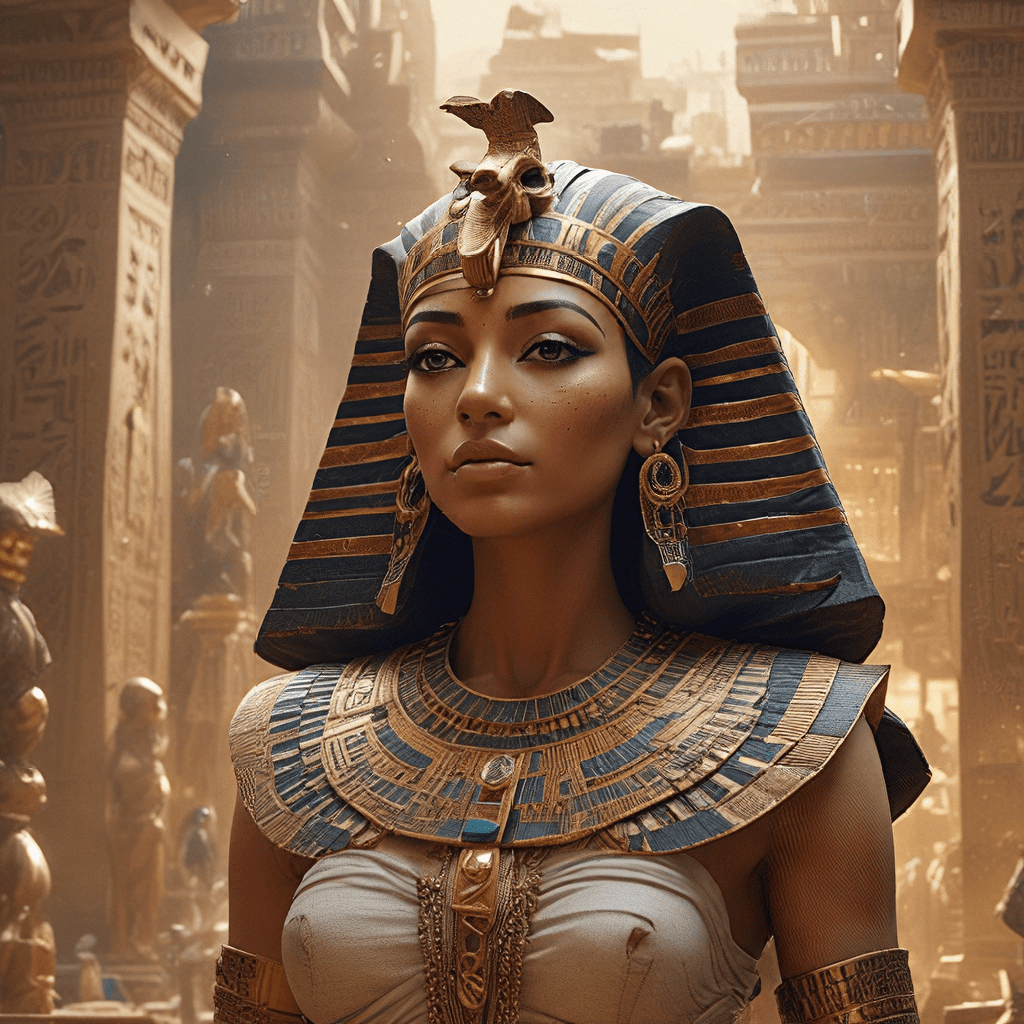1. Introduction: The Enduring Fascination with the Egyptian Afterlife
The ancient Egyptians’ beliefs about the afterlife have captivated the imaginations of people for centuries. These beliefs are woven into their art, architecture, and literature, leaving an enduring legacy on our understanding of death and the beyond. The Egyptian afterlife, with its complex rituals and intricate mythology, stands apart from other ancient cultures, offering a unique glimpse into the human desire for continuity beyond the physical realm. Understanding these beliefs from a cross-cultural perspective helps us appreciate the universality of human fascination with life after death, while recognizing the specific cultural expressions that shape these beliefs.
2. The Journey to the Afterlife: Navigating the Underworld
For the ancient Egyptians, death wasn’t an end, but a transition. The concept of “ka,” a spiritual essence that embodied a person’s personality and identity, was believed to survive the physical body’s demise. To ensure a smooth journey to the afterlife, the Egyptians developed intricate rituals like mummification. This process involved preserving the body as a vessel for the ka to inhabit in the afterlife. The journey to the afterlife was depicted as a perilous passage through the underworld, the Duat. This realm was a labyrinth of dangers and trials, including the “Weighing of the Heart” ceremony. Here, the deceased’s heart was weighed against the feather of Ma’at, the goddess of truth and justice. If the heart was lighter than the feather, the deceased was judged worthy of entering the afterlife and was granted eternal life in the Field of Reeds, a paradise filled with abundance. However, if the heart was found to be heavy with sins, the deceased would be devoured by the monster Ammit, leading to a grim fate in the underworld.
3. The Egyptian Underworld: A Realm of Judgment and Reward
The Egyptian underworld, the Duat, was a vast and mysterious realm. It was inhabited by a diverse cast of deities, each with their own role in the afterlife process. Anubis, the jackal-headed god, presided over mummification and guided the deceased through the trials of the underworld. Thoth, the god of knowledge and wisdom, weighed the heart during the judgment ceremony. Osiris, the god of the underworld and resurrection, served as judge and ruler of the afterlife. The Duat was a place of profound symbolism, reflecting the Egyptians’ understanding of cosmic order and the interconnectedness of life, death, and rebirth. It held various realms, each with its distinct characteristics. The Field of Reeds, for example, was a paradise of eternal life and abundance, where the righteous enjoyed an idyllic existence. But the Duat also contained terrifying creatures and dangerous trials, reflecting the Egyptians’ belief that the afterlife was a place where one’s actions in life would be judged, and consequences for wrongdoing would be severe.
4. Comparative Perspectives: Similarities and Differences in Afterlife Beliefs
The Egyptian belief in the afterlife shares common themes with other ancient cultures. Many civilizations, including the Mesopotamians, Greeks, and Romans, developed complex beliefs about judgment, reward, and punishment after death. Their mythologies featured underworld deities and elaborate rituals to ensure a peaceful passage to the afterlife. For instance, the Mesopotamians believed in a shadowy underworld, ruled by the goddess Ereshkigal, where the dead lived in gloom and darkness. The Greeks envisioned a realm called Hades, ruled by the god of the same name, where the deceased were judged and sent to their appropriate afterlife. Despite these similarities, each culture developed its own unique set of beliefs and practices reflecting their cultural and historical context. The Egyptian focus on the weighing of the heart, the importance of “Ma’at” (justice, truth, and balance), and the concept of “ka” are distinctive elements that set their afterlife beliefs apart.
5. Egyptian Afterlife Beliefs in Modern Times
The enduring fascination with the Egyptian afterlife persists in modern times. Egyptian mythology continues to influence popular culture, inspiring works of fiction, film, and art. The iconic imagery of mummies, pyramids, and the underworld has become synonymous with ancient Egypt and its rich history. However, modern scientific discoveries and changing cultural perspectives have inevitably led to reinterpretations of these beliefs. The rise of secularism and scientific explanations for death have challenged traditional beliefs in a divine afterlife. Yet, the human desire for meaning and continuity beyond death remains a universal experience, prompting a continuous reexamination and reinterpretation of ancient beliefs in the context of modern life.
6. The Importance of Ethical Living in the Egyptian Afterlife
A central theme in the Egyptian afterlife belief system is the importance of ethical living. The concept of “Ma’at” – justice, truth, and balance – permeated all aspects of Egyptian society, from daily life to their understanding of the cosmos. Living a virtuous life, upholding truth and justice, and maintaining balance in one’s actions were believed to be essential for a favorable judgment in the afterlife. The Egyptians believed that those who lived according to “Ma’at” would be rewarded with eternal life in the Field of Reeds, a paradise filled with joy and abundance. But those who transgressed the principles of “Ma’at” risked a harsh judgment and a bleak existence in the underworld. This emphasis on ethical behavior and accountability reinforces the enduring human desire for a just universe, where actions have consequences and a virtuous life is rewarded beyond the grave.




